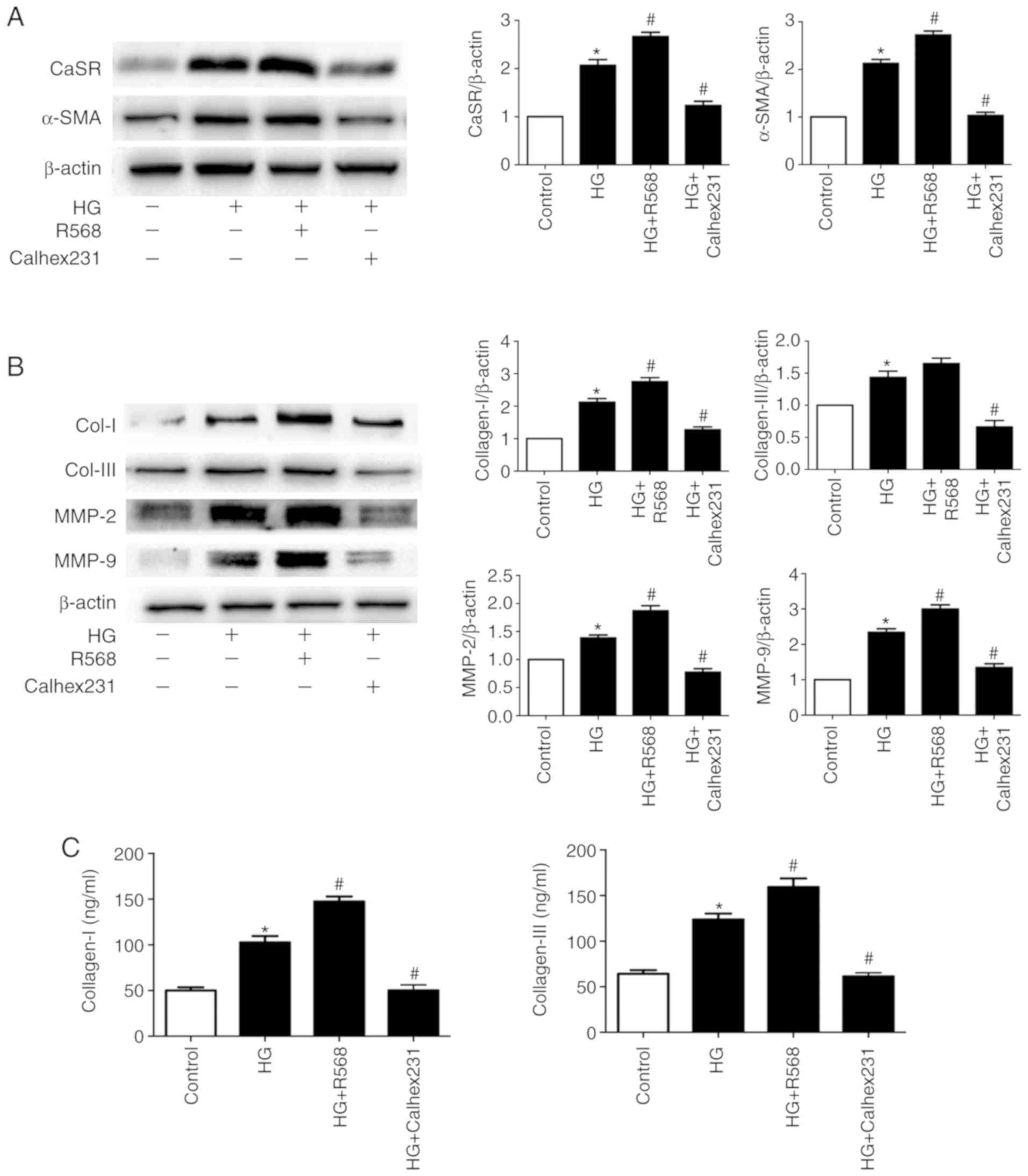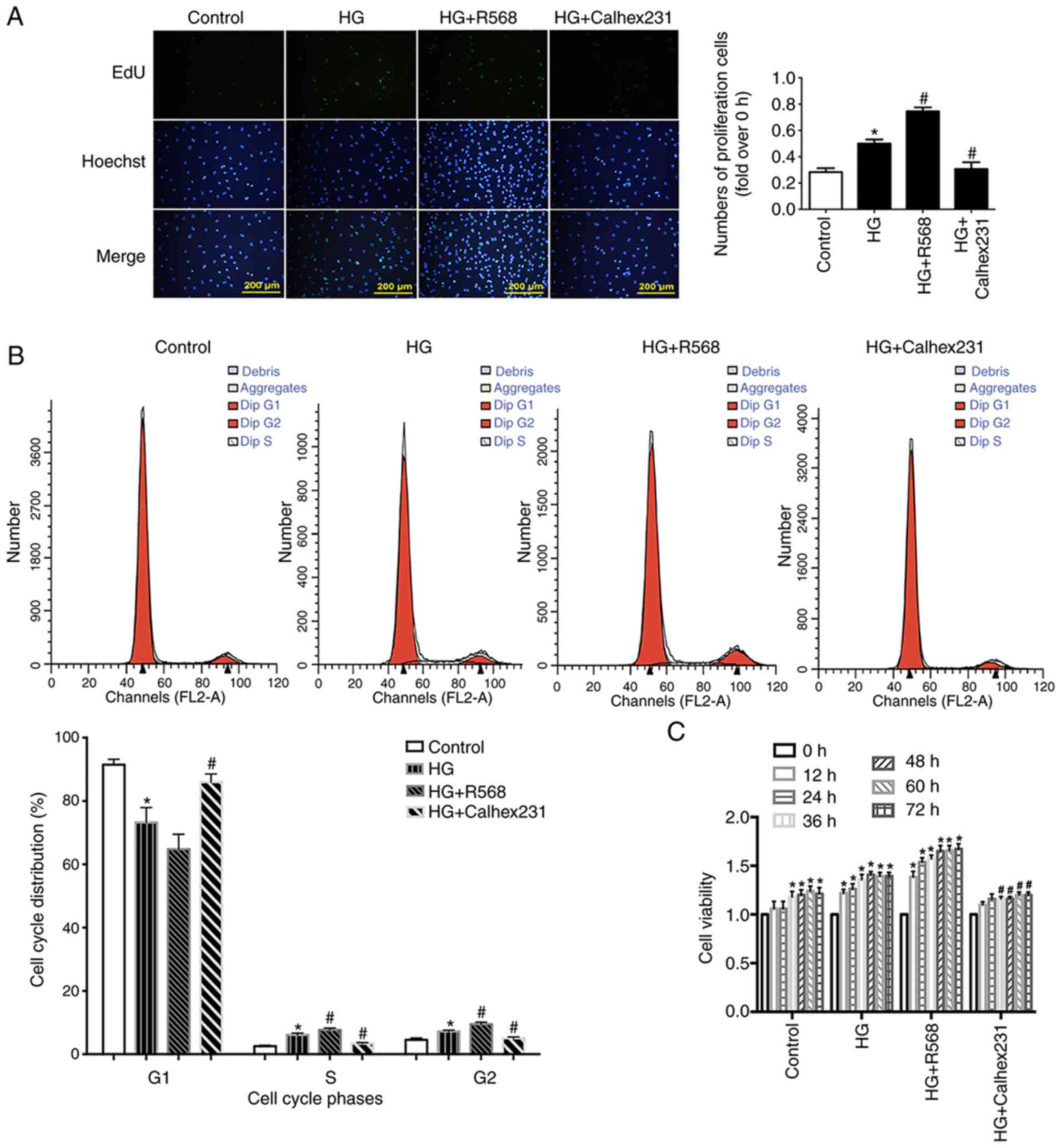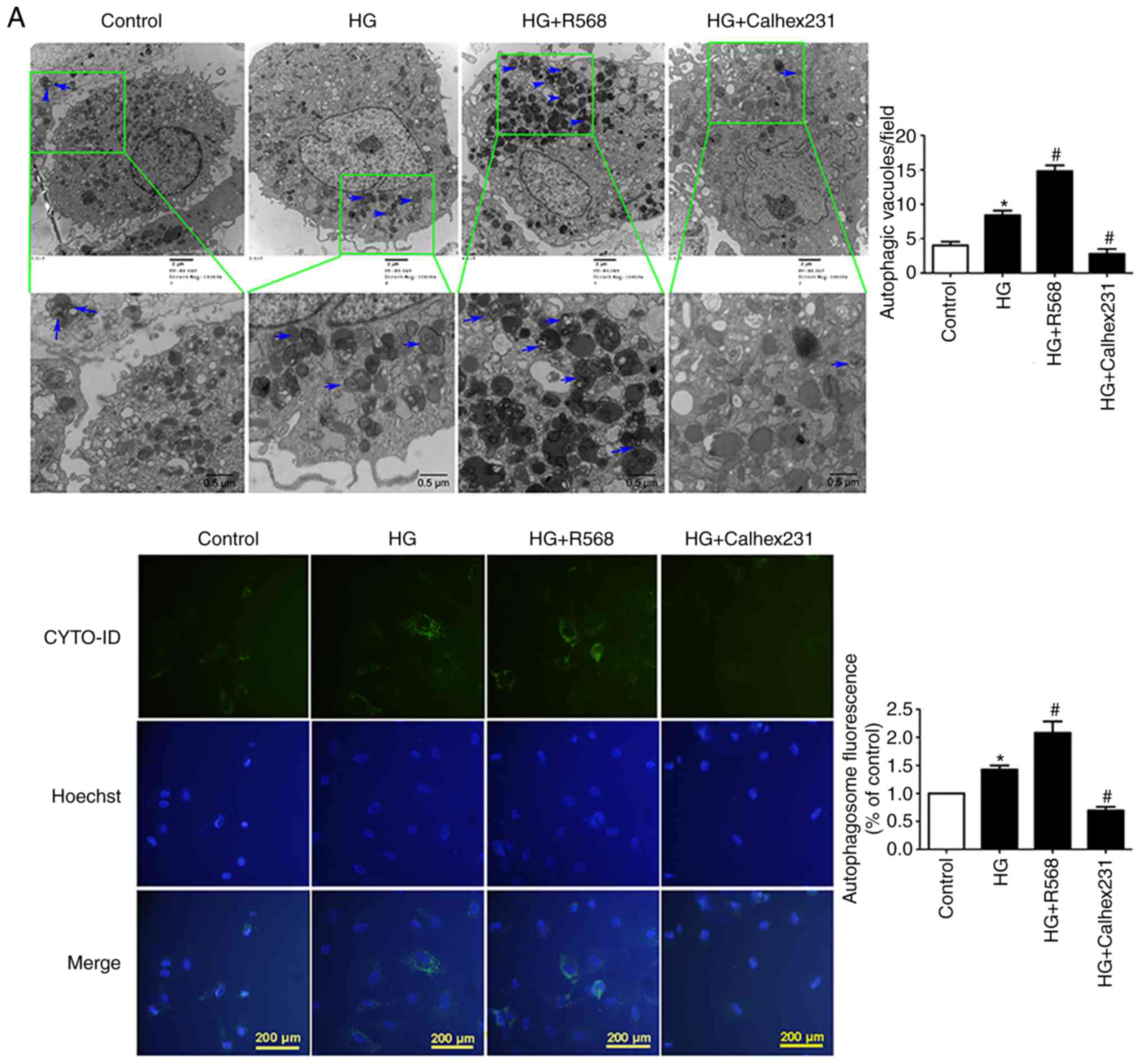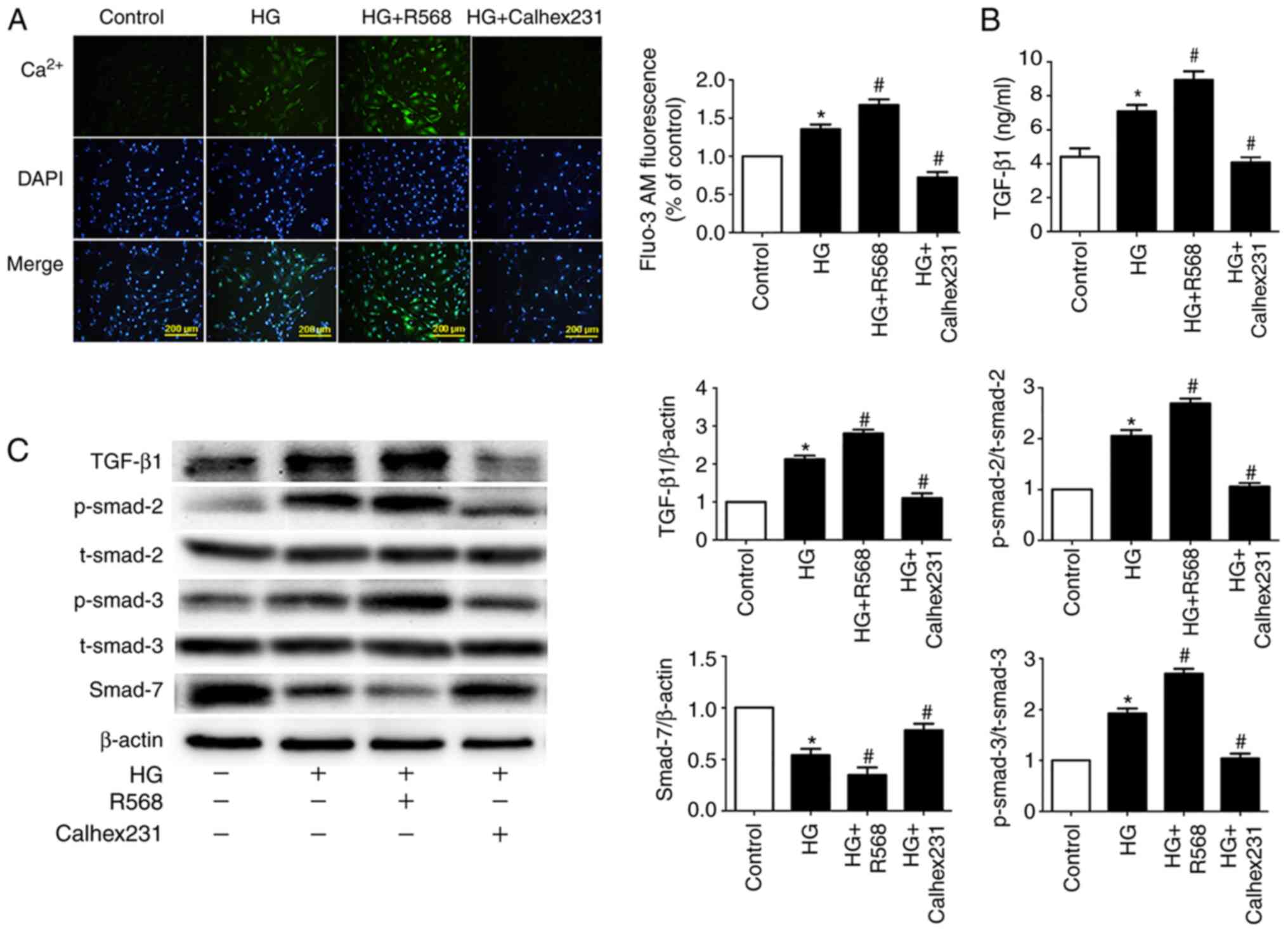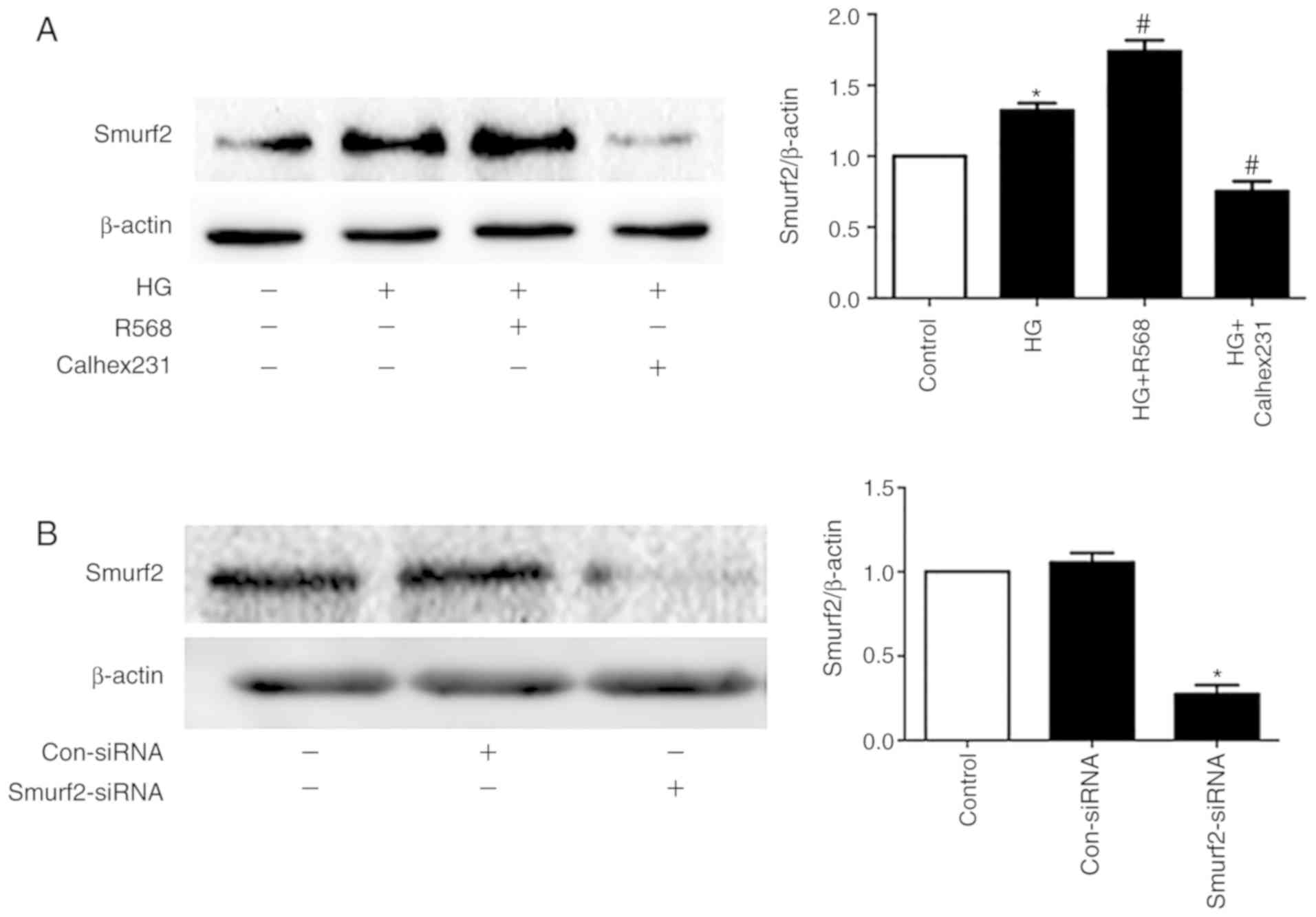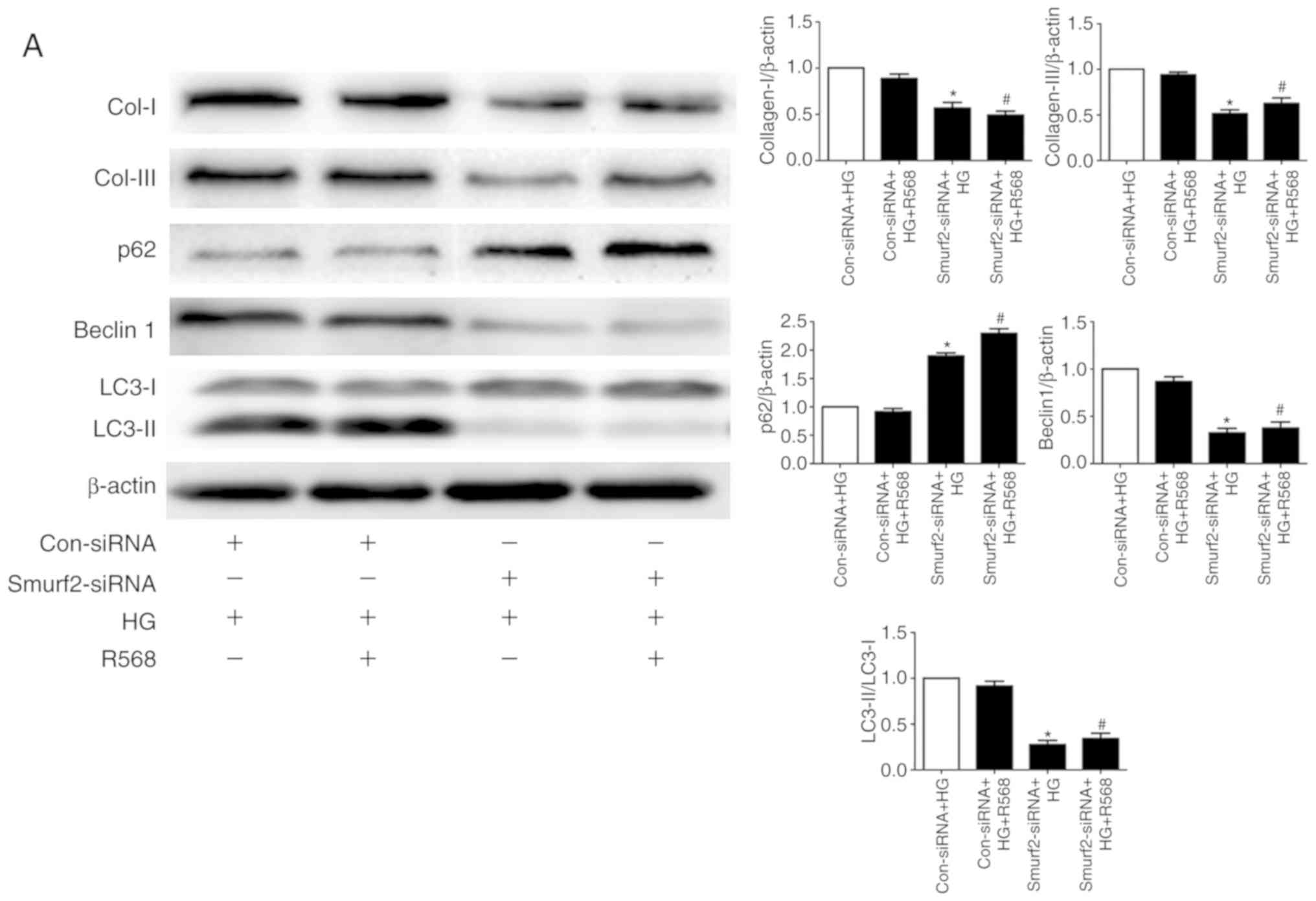|
1
|
Sun L, Yu M, Zhou T, Zhang S, He G, Wang G
and Gang X: Current advances in the study of diabetic
cardiomyopathy: From clinicopathological features to molecular
therapeutics (Review). Mol Med Rep. 20:2051–2062. 2019.PubMed/NCBI
|
|
2
|
Xue H, Tao Y, Deng Y, Yu J, Sun Y and
Jiang G: Metformin accelerates wound healing in type 2 diabetic
db/db mice. Mol Med Rep. 16:8691–8698. 2017. View Article : Google Scholar : PubMed/NCBI
|
|
3
|
Preshaw PM, Alba AL, Herrera D, Jepsen S,
Konstantinidis A, Makrilakis K and Taylor R: Periodontitis and
diabetes: A two-way relationship. Diabetologia. 55:21–31. 2012.
View Article : Google Scholar : PubMed/NCBI
|
|
4
|
Westermeier F, Riquelme JA, Pavez M,
Garrido V, Díaz A, Verdejo HE, Castro PF, García L and Lavandero S:
New molecular insights of insulin in diabetic cardiomyopathy. Front
Physiol. 7:1252016. View Article : Google Scholar : PubMed/NCBI
|
|
5
|
Fowlkes V, Clark J, Fix C, Law BA, Morales
MO, Qiao X, Ako-Asare K, Goldsmith JG, Carver W, Murray DB and
Goldsmith EC: Type II diabetes promotes a myofibroblast phenotype
in cardiac fibroblasts. Life Sci. 92:669–676. 2013. View Article : Google Scholar : PubMed/NCBI
|
|
6
|
Cavalera M, Wang J and Frangogiannis NG:
Obesity, metabolic dysfunction, and cardiac fibrosis:
Pathophysiological pathways, molecular mechanisms, and therapeutic
opportunities. Transl Res. 164:323–335. 2014. View Article : Google Scholar : PubMed/NCBI
|
|
7
|
Hutchinson KR, Lord CK, West TA and
Stewart JA Jr: Cardiac fibroblast-dependent extracellular matrix
accumulation is associated with diastolic stiffness in type 2
diabetes. PLoS One. 8:e720802013. View Article : Google Scholar : PubMed/NCBI
|
|
8
|
Wang Y, Gao P, Wei C, Li H, Zhang L, Zhao
Y, Wu B, Tian Y, Zhang W, Wu L, et al: Calcium sensing receptor
protects high glucose-induced energy metabolism disorder via
blocking gp78-ubiquitin proteasome pathway. Cell Death Dis.
8:e27992017. View Article : Google Scholar : PubMed/NCBI
|
|
9
|
Chen Z, Miller CL, Brown EM and Yang JJ:
The calcium sensing receptor: From calcium sensing to signaling.
Sci China Life Sci. 58:14–27. 2015. View Article : Google Scholar : PubMed/NCBI
|
|
10
|
Tennakoon S, Aggarwal A and Kállay E: The
calcium-sensing receptor and the hallmarks of cancer. Biochim
Biophys Acta. 1863:1398–1407. 2016. View Article : Google Scholar : PubMed/NCBI
|
|
11
|
Tharmalingam S and Hampson DR: The
calcium-sensing receptor and integrins in cellular differentiation
and migration. Front Physiol. 7:1902016. View Article : Google Scholar : PubMed/NCBI
|
|
12
|
Hendy GN and Lucie C: Calcium-sensing
receptor gene: Regulation of expression. Front Physiol. 7:3942016.
View Article : Google Scholar : PubMed/NCBI
|
|
13
|
Goru SK, Pandey A and Gaikwad AB: E3
ubiquitin ligases as novel targets for inflammatory diseases.
Pharmacol Res. 106:1–9. 2016. View Article : Google Scholar : PubMed/NCBI
|
|
14
|
Bizet AA, Trankhanh N, Saksena A, Liu K,
Buschmann MD and Philip A: CD109-mediated degradation of TGF-β
receptors and inhibition of TGF-β responses involve regulation of
SMAD7 and Smurf2 localization and function. J Cell Biochem.
113:238–246. 2011. View Article : Google Scholar
|
|
15
|
Yuan H, Guo SX and Zhang JM: Effect of
autophagy in traumatic brain injury. Chin J Pathophysiol.
27:1652–1656. 2011.
|
|
16
|
Levine B and Kroemer G: Autophagy in the
pathogenesis of disease. Cell. 132:27–42. 2008. View Article : Google Scholar : PubMed/NCBI
|
|
17
|
Ghavami S, Cunnington RH, Gupta S, Yeganeh
B, Filomeno KL, Freed DH, Chen S, Klonisch T, Halayko AJ, Ambrose
E, et al: Autophagy is a regulator of TGF-β1-induced fibrogenesis
in primary human atrial myofibroblasts. Cell Death Dis.
6:e16962015. View Article : Google Scholar : PubMed/NCBI
|
|
18
|
Wu J, Tian Z, Sun Y, Lu C, Liu N, Gao Z,
Zhang L, Dong S, Yang F, Zhong X, et al: Exogenous H2S
facilitating ubiquitin aggregates clearance via autophagy
attenuates type 2 diabetes-induced cardiomyopathy. Cell Death Dis.
8:e29922017. View Article : Google Scholar : PubMed/NCBI
|
|
19
|
Peng X, Li HX, Shao HJ, Li GW, Sun J, Xi
YH, Li HZ, Wang XY, Wang LN, Bai SZ, et al: Involvement of
calcium-sensing receptors in hypoxia-induced vascular remodeling
and pulmonary hypertension by promoting phenotypic modulation of
small pulmonary arteries. Mol Cell Biochem. 396:87–98. 2014.
View Article : Google Scholar : PubMed/NCBI
|
|
20
|
Xu C, Zhang W, Jiang C, Sun Y and Wang R:
Involvement of calcium sensing receptor in myocardial
ischemia/reperfusion injury and apoptosis. J Mol Cell Cardiol.
42:S80–S81. 2007. View Article : Google Scholar
|
|
21
|
Pan YL, Han ZY, He SF, Yang W, Cheng J,
Zhang Y and Chen ZW: miR133b5p contributes to hypoxic
preconditioningmediated cardioprotection by inhibiting the
activation of caspase8 and caspase-3 in cardiomyocytes. Mol Med
Rep. 17:7097–7104. 2018.PubMed/NCBI
|
|
22
|
Liu Z, Hua J, Cai W, Zhan Q, Lai W, Zeng
Q, Ren H and Xu D: N-terminal truncated peroxisome
proliferator-activated receptor-γ coactivator-1α alleviates
phenylephrine-induced mitochondrial dysfunction and decreases lipid
droplet accumulation in neonatal rat cardiomyocytes. Mol Med Rep.
18:2142–2152. 2018.PubMed/NCBI
|
|
23
|
Liu S, Chen S, Li M, Zhang B, Shen P, Liu
P, Zheng D, Chen Y and Jiang J: Autophagy activation attenuates
angiotensin II-induced cardiac fibrosis. Arch Biochem Biophys.
590:37–47. 2016. View Article : Google Scholar : PubMed/NCBI
|
|
24
|
Tran QG, Yoon HR, Cho K, Lee SJ, Crespo
JL, Ramanan R and Kim HS: Dynamic interactions between
autophagosomes and lipid droplets in chlamydomonas reinhardtii.
Cells. 8:9922019. View Article : Google Scholar
|
|
25
|
Sun Z, Wang Y, Ji S, Wang K and Zhao Y:
Computer-aided analysis with Image J for quantitatively assessing
psoriatic lesion area. Skin Res Technol. 21:437–443. 2015.
View Article : Google Scholar : PubMed/NCBI
|
|
26
|
Mo Y, Lou Y, Zhang A, Zhang J, Zhu C,
Zheng B, Li D, Zhang M, Jin W, Zhang L and Wang J: PICK1 deficiency
induces autophagy dysfunction via lysosomal impairment and
amplifies sepsis-induced acute lung injury. Mediators Inflamm.
2018:67573682018. View Article : Google Scholar : PubMed/NCBI
|
|
27
|
Estévez-García IO, Cordoba-Gonzalez V,
Lara-Padilla E, Fuentes-Toledo A, Falfán-Valencia R,
Campos-Rodríguez R and Abarca-Rojano E: Glucose and glutamine
metabolism control by APC and SCF during the G1-to-S
phase transition of the cell cycle. J Physiol Biochem. 70:569–581.
2014. View Article : Google Scholar : PubMed/NCBI
|
|
28
|
Wu L, Zhang Q, Mo W, Feng J, Li S, Li J,
Liu T, Xu S, Wang W, Lu X, et al: Quercetin prevents hepatic
fibrosis by inhibiting hepatic stellate cell activation and
reducing autophagy via the TGF-β1/Smads and PI3K/Akt pathways. Sci
Rep. 7:92892017. View Article : Google Scholar : PubMed/NCBI
|
|
29
|
Groop L and Pociot F: Genetics of
diabetes-are we missing the genes or the disease? Mol Cell
Endocrinol. 382:726–739. 2014. View Article : Google Scholar : PubMed/NCBI
|
|
30
|
Adeghate E: Molecular and cellular basis
of the aetiology and management of diabetic cardiomyopathy: A short
review. Mol Cell Biochem. 261:187–191. 2004. View Article : Google Scholar : PubMed/NCBI
|
|
31
|
Lam S, Verhagen NAM, Strutz F, van der
Pijl JW, Daha MR and van Kooten C: Glucose-induced fibronectin and
collagen type III expression in renal fibroblasts can occur
independent of TGF-beta1. Kidney Int. 63:878–888. 2003. View Article : Google Scholar : PubMed/NCBI
|
|
32
|
Kehlet SN, Willumsen N, Armbrecht G,
Dietzel R, Brix S, Henriksen K and Karsdal MA: Age-related collagen
turnover of the interstitial matrix and basement membrane:
Implications of age- and sex-dependent remodeling of the
extracellular matrix. PLoS One. 13:e01944582018. View Article : Google Scholar : PubMed/NCBI
|
|
33
|
Russo I and Frangogiannis NG:
Diabetes-associated cardiac fibrosis: Cellular effectors, molecular
mechanisms and therapeutic opportunities. J Mol Cell Cardiol.
90:84–93. 2016. View Article : Google Scholar : PubMed/NCBI
|
|
34
|
Loboda A, Sobczak M, Jozkowicz A and Dulak
J: TGF-β1/Smads and miR-21 in renal fibrosis and inflammation.
Mediators Inflamm. 2016:83192832016. View Article : Google Scholar : PubMed/NCBI
|
|
35
|
Yao M, Wang X, Wang X, Zhang T, Chi Y and
Gao F: The Notch pathway mediates the angiotensin II-induced
synthesis of extracellular matrix components in podocytes. Int J
Mol Med. 36:294–300. 2015. View Article : Google Scholar : PubMed/NCBI
|
|
36
|
Yasuda J, Fukui K, Okada M and Yamawaki H:
T3 peptide, a fragment of tumstatin, stimulates proliferation and
migration of cardiac fibroblasts through activation of Akt
signaling pathway. Naunyn Schmiedebergs Arch Pharmacol.
390:1135–1144. 2017. View Article : Google Scholar : PubMed/NCBI
|
|
37
|
Zhang X, Zhang T, Wu J, Yu X, Zheng D,
Yang F, Li T, Wang L, Zhao Y, Dong S, et al: Calcium sensing
receptor promotes cardiac fibroblast proliferation and
extracellular matrix secretion. Cell Physiol Biochem. 33:5572014.
View Article : Google Scholar : PubMed/NCBI
|
|
38
|
Nakamura A, Hotsubo T, Kobayashi K,
Mochizuki H, Ishizu K and Tajima T: Loss-of-function and
gain-of-function mutations of calcium-sensing receptor: Functional
analysis and the effect of allosteric modulators NPS R-568 and NPS
2143. J Clin Endocrinol Metab. 98:E1692–E1701. 2013. View Article : Google Scholar : PubMed/NCBI
|
|
39
|
Petrel C, Kessler A, Dauban P, Dodd RH,
Rognan D and Ruat M: Positive and negative allosteric modulators of
the Ca2+-sensing receptor interact within overlapping
but not identical binding sites in the transmembrane domain. J Biol
Chem. 279:18990–18997. View Article : Google Scholar : PubMed/NCBI
|
|
40
|
Gottlieb RA and Mentzer RM Jr: Autophagy:
An affair of the heart. Heart Fail Rev. 18:575–584. 2013.
View Article : Google Scholar : PubMed/NCBI
|
|
41
|
Chi J, Wang L, Zhang X, Fu Y, Liu Y, Chen
W, Liu W, Shi Z and Yin X: Activation of calcium-sensing
receptor-mediated autophagy in AngiotensinII-induced cardiac
fibrosis in vitro. Biochem Biophys Res Commun. 497:571–576. 2018.
View Article : Google Scholar : PubMed/NCBI
|
|
42
|
Liu L, Wang C, Sun D, Jiang S, Li H, Zhang
W, Zhao Y, Xi Y, Shi S, Lu F, et al: Calhex231 ameliorates cardiac
hypertrophy by inhibiting cellular autophagy in vivo and in vitro.
Cell Physiol Biochem. 36:1597–1612. 2015. View Article : Google Scholar : PubMed/NCBI
|
|
43
|
Yao LH: Diverse roles of TGF-β/Smads in
renal fibrosis and inflammation. Int J Biol Sci. 7:1056–1067. 2011.
View Article : Google Scholar : PubMed/NCBI
|
|
44
|
Deheuninck J and Luo K: Ski and SnoN,
potent negative regulators of TGF-beta signaling. Cell Res.
14:65–70. 2004.
|
|
45
|
Smith GL and Eisner DA: Calcium buffering
in the heart in health and disease. Circulation. 139:2358–2371.
2019. View Article : Google Scholar : PubMed/NCBI
|
|
46
|
Iino M: Spatiotemporal dynamics of
Ca2+ signaling and its physiological roles. Proc Jpn
Acad Ser B Phys Biol Sci. 86:244–256. 2010. View Article : Google Scholar : PubMed/NCBI
|
|
47
|
Baba Y and Kurosaki T: Physiological
function and molecular basis of STIM1-mediated calcium entry in
immune cells. Immunol Rev. 231:174–188. 2009. View Article : Google Scholar : PubMed/NCBI
|
|
48
|
Zhang WH, Fu SB, Lu FH, Wu B, Gong DM, Pan
ZW, Lv YJ, Zhao YJ, Li QF, Wang R, et al: Involvement of
calcium-sensing receptor in ischemia/reperfusion-induced apoptosis
in rat cardiomyocytes. Biochem Biophys Res Commun. 347:872–881.
2006. View Article : Google Scholar : PubMed/NCBI
|
|
49
|
Lönn P, Vanlandewijck M, Raja E, Kowanetz
M, Watanabe Y, Kowanetz K, Vasilaki E, Heldin CH and Moustakas A:
Transcriptional induction of salt-inducible kinase 1 by
transforming growth factor β leads to negative regulation of type I
receptor signaling in cooperation with the Smurf2 ubiquitin ligase.
J Biol Chem. 287:12867–12878. 2012. View Article : Google Scholar : PubMed/NCBI
|
|
50
|
Cai Y, Shen XZ, Zhou CH and Wang JY:
Abnormal expression of Smurf2 during the process of rat liver
fibrosis. Chin J Dig Dis. 7:237–245. 2010. View Article : Google Scholar
|
|
51
|
Duran J, Troncoso M, Lagos D, Ramos S,
Marin G and Estrada M: GDF11 modulates Ca2+-dependent
Smad2/3 signaling to prevent cardiomyocyte hypertrophy. Int J Mol
Sci. 19:15082018. View Article : Google Scholar
|















